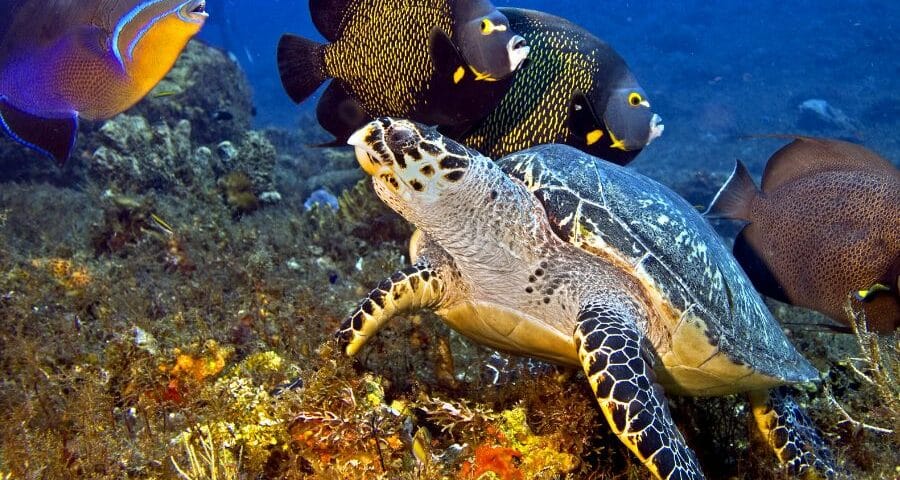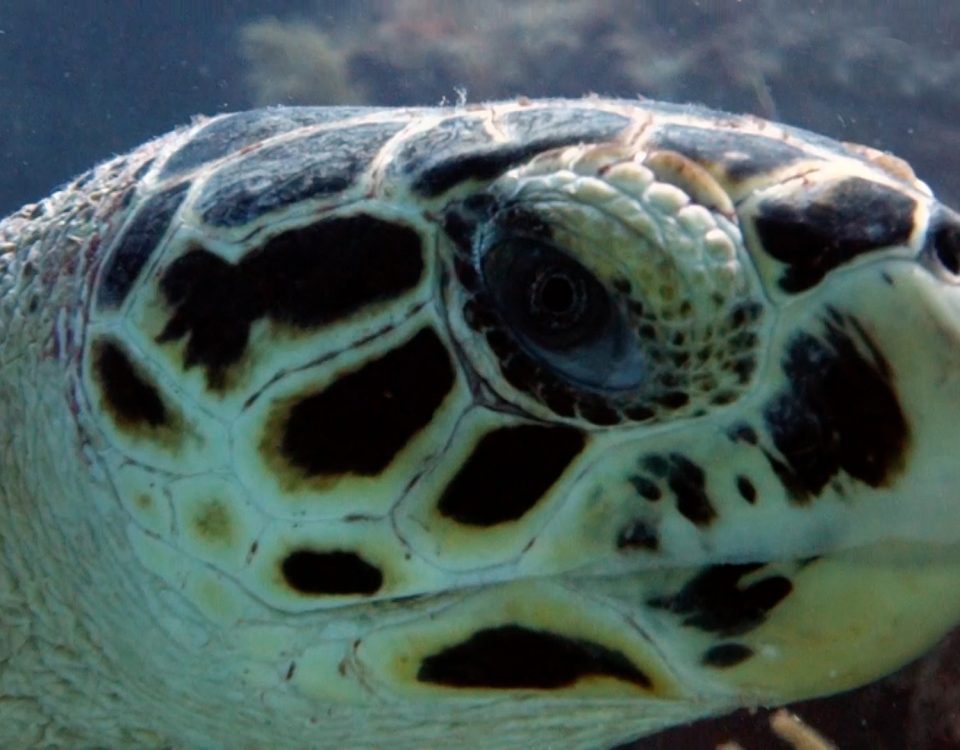Underwater ecosystems, vast and diverse, harbor a wealth of life and stunning landscapes that deserve to be explored and understood. In this article, we delve into the world of marine ecosystems, unraveling key terms, types of underwater ecosystems, and discovering which ones you can explore in the Caribbean.

Night Snorkeling Techniques
21/02/2024
Closed-Circuit Rebreathers Maintenance Guide
06/03/20241. Clarifying Key Terms About Underwater Ecosystems
- 1.1. What exactly is an aquatic ecosystem?
- 1.2. Differences between oceanic ecosystem and marine ecosystem
- 1.3. The importance of underwater ecosystems
2. 6 Types of Marine Ecosystems
3. 3 Specific Examples of Marine Ecosystems You Can Explore with Dressel Divers
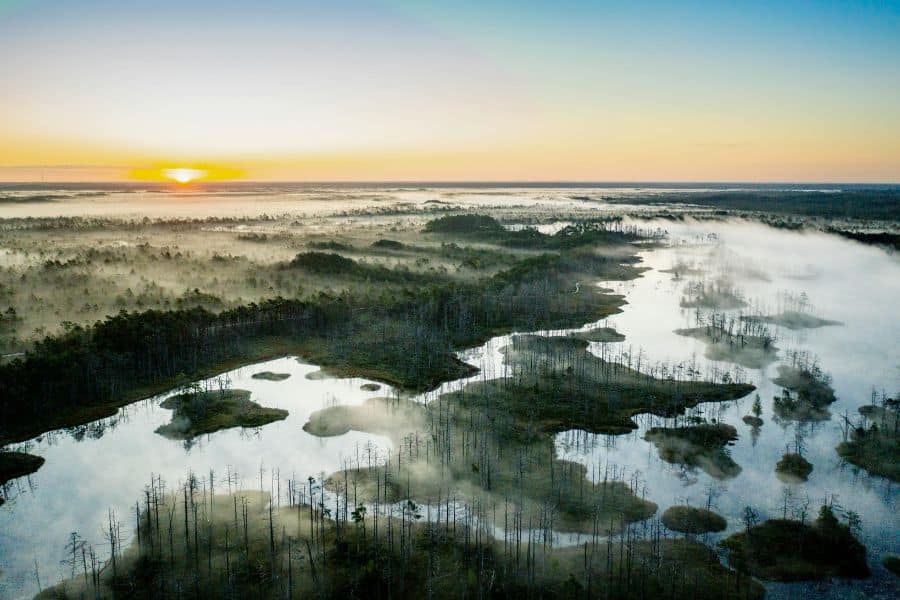
1. Clarifying Key Terms About Underwater Ecosystems
1.1. What exactly is an aquatic ecosystem?
Two-thirds of our planet is covered in water, including oceans, seas, rivers, lakes, wetlands, and even sinkholes or cenotes. Therefore, an aquatic ecosystem refers to a body of water where living organisms (biotic) as well as inert elements (abiotic) are found, all interacting within it. This includes things like sunlight, temperature, salinity, plants, animals, and even bacteria.
These aquatic masses comprise different habitats, including coastal areas, coral reefs, marine beds, estuaries, and even hydrothermal vents in oceanic trenches… Each ecosystem teems with unique life forms, uniquely adapted to their environment, showcasing nature’s evolutionary capabilities to adapt to specific conditions.
While some species, like bull sharks, defy the norm with their ability to live in both saltwater and freshwater, most aquatic organisms are finely tuned to their environment, whether salty or fresh.
In this article, we will focus on salty habitats, typical of marine and oceanic ecosystems.
1.2. Differences between oceanic and marine underwater ecosystems
The terms “marine ecosystem” and “oceanic ecosystem” are often used interchangeably, but there are some subtle differences between them.
Pacific, Indian, Arctic, Antarctic, and Atlantic—5 oceans cover our planet, and although they contain seas, when it comes to naming ecosystems, it’s a different story.
An underwater ecosystem with saltwater as the main component is called a marine ecosystem. Marine ecosystems encompass various areas such as oceans, seas, marshes, reefs, and coastal zones, among others.
On the other hand, the oceanic ecosystem is a specific category within marine ecosystems, extending to areas farther from the coast; including, pelagic waters, the seabed, and other environments such as hydrothermal vents.
In summary, although all oceanic ecosystems are part of marine ecosystems, not all marine ecosystems are considered oceanic, as the latter refers solely to open sea areas, excluding coastal zones.
1.3. The importance of underwater ecosystems
- Biodiversity:
We’re talking about vast expanses of blue beauty harboring astonishing marine biodiversity. Only in the Caribbean Sea do we find an incredible variety of life, with over 5,000 species of fish and countless invertebrates. From the elegant dance and vibrant colors of tropical fish to the majestic presence of blue whales, passing through tube worms or fan-like animals. This diversity creates a complex and fascinating web of interconnected life.
- Interconnection and adaptation:
Each ecosystem plays a vital role in supporting the overall health of the ocean. Understanding these connections is crucial for conservation efforts. In the aquatic realm, survival depends on a delicate balance of adaptation and innovation. From streamlined bodies effortlessly gliding through the water to specialized respiratory organs and drainage mechanisms, aquatic organisms have evolved an impressive array of strategies to thrive in their watery world.
But it’s not just the elements within underwater ecosystems that are interconnected; after all, life on land originated there. Additionally, marine ecosystems play a crucial role in climate regulation, contribute to the planet’s hydrological balance, protect terrestrial ecosystems from erosion, and provide sustenance, etc., etc., etc.
- Vulnerability:
Unfortunately, these ecosystems face threats from pollution, climate change, and overfishing. Responsible diving practices and support for conservation initiatives are essential to safeguard them.
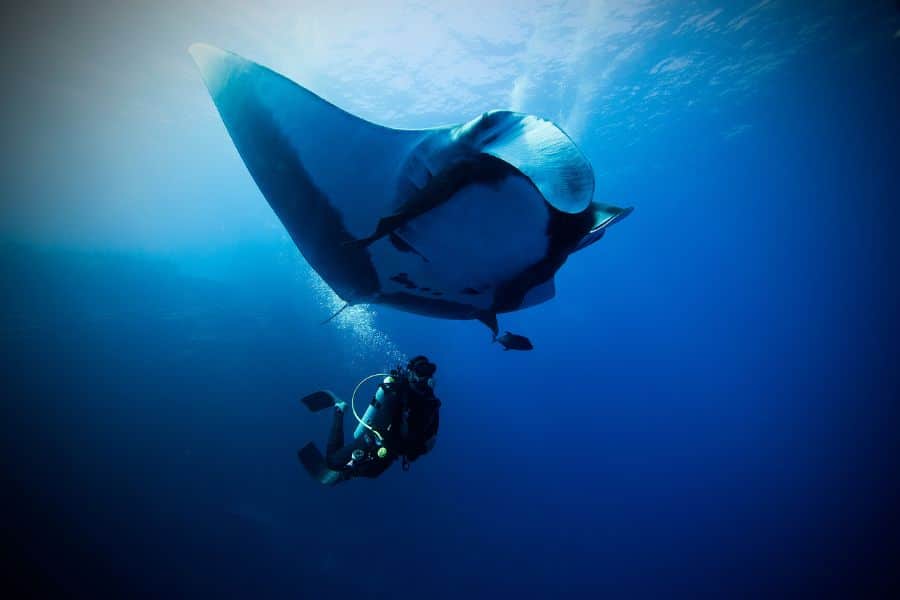
2. 6 Types of Marine Ecosystems
Scientists divide marine ecosystems into several broad categories, although, as we mentioned, there are discrepancies, and the number of ecosystems in the ocean is subject to debate, the following types of marine ecosystems are widely accepted.
Marine Coastal Ecosystems
Estuaries
An estuary is a coastal area where oceans meet rivers. Here, nutrients and salts from the ocean mix with those from the river in regions protected from extreme weather conditions. As a result, estuaries are among the most productive places on Earth and support many types of life.
Salt Marshes
While estuaries form where the ocean meets rivers, salt marshes occur where oceans meet land. These places are rich in nutrients from sediments brought by the ocean. Salt marshes are regularly flooded by high tides, making the surrounding soil wet and salty. As a result, the soil has little oxygen and is full of decomposing matter. These ecosystems are dominated by shrubs and low-growing grasses.
Mangrove Forests
Another coastal ecosystem is the mangrove forest. Mangrove forests are found in tropical areas. These ecosystems are frequently flooded with seawater, submerging the roots of mangrove trees. The root systems of mangroves filter out salt and are positioned above ground to access oxygen. These trees provide a home for a variety of species. Animals like fish, crabs, shrimp, reptiles, and amphibians live among the mangrove roots, while their canopies provide nesting sites for birds.
Underwater Ecosystems
Coral Reefs
A bit farther from the coast in tropical seas are coral reefs. These underwater ecosystems are in the euphotic zone (receiving sunlight) and are built from the exoskeleton of corals themselves. These exoskeletons form complex structures that host many different organisms. Coral reefs are extremely diverse ecosystems that host sponges, crustaceans, mollusks, fish, turtles, sharks, dolphins, and many other creatures. According to some counts, coral reefs may account for a quarter of all oceanic species.
Oceanic Underwater Ecosystems
Open Waters
Beyond coral reefs lies the open ocean. Ecosystems in the open ocean vary widely as the depth of the ocean changes. At the ocean surface, the ecosystem receives plenty of light and oxygen, is quite warm, and sustains many photosynthetic organisms. Many of the organisms we associate with marine ecosystems, such as whales, dolphins, octopuses, and sharks, live in the open ocean.
Deep Waters
As the depth of the ocean increases, it becomes darker, colder, and with less available oxygen. Organisms living in deep-sea ecosystems are within the dysphotic and aphotic zones, where sunlight does not reach, and they have unusual adaptations that help them survive in these challenging environments.
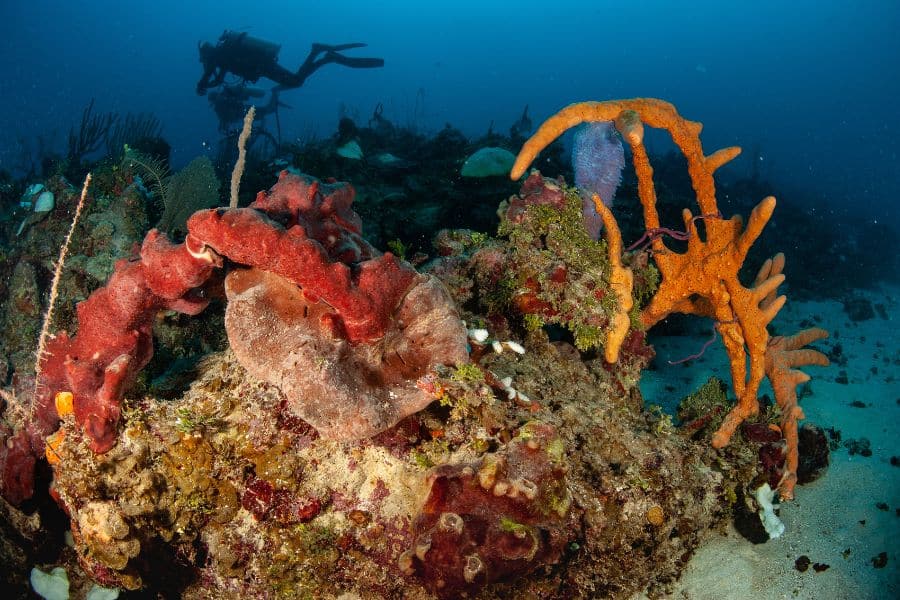
3. 3 Specific Examples of Marine Ecosystems You Can Explore with Dressel Divers
3.1. Why Explore the Underwater Ecosystems of the Caribbean?
For its biodiversity
The Caribbean boasts incredible marine life, from playful dolphins to majestic whale sharks. Each ecosystem offers a unique glimpse into the interconnectedness of underwater life. Here, amidst swaying seagrasses and vibrant coral gardens, a diverse community thrives, from skittering crabs to tree-like worms and the intricate mazes of mangrove forests. Explore the rich variety of flora and fauna that call these coastal systems home, where every crevice harbors a new wonder waiting to be discovered.
For thrilling experiences
Dive into coral reefs teeming with life, sail through history-filled shipwrecks, or encounter gentle giants like manta rays in open waters, kayak through mangroves. The Caribbean caters to all.
3.2. Cozumel Coral Reefs
Diving in the marine ecosystems of Cozumel is to do so in the jewel of the Caribbean.
Cozumel is not just a tropical paradise; it is an underwater sanctuary bursting with colorful marine life. Its famous coral reefs, considered the second largest in the world, host an exceptionally diverse underwater ecosystem.
Imagine descending among vibrant coral gardens, home to hundreds of tropical fish gracefully swimming. With luck, you could admire majestic sea turtles peacefully grazing, or even witness a parade of graceful rays.
3.3. Jamaican Mangroves
Kayaking adventures through the mangroves of Jamaica
Jamaica’s mangroves, a unique and fascinating marine ecosystem, invite you to an unforgettable kayaking adventure. Paddling through labyrinths of aerial roots and under the shade of towering trees, you’ll enter a world full of life and mystery.
Observe up close the diversity of this ecosystem: from multicolored fish swimming among the roots to exotic birds flitting between branches. Listen to the sound of nature at its fullest, the birdsong, the rustle of leaves, and the gentle splash of water beneath your kayak.
Kayaking in Jamaica’s mangroves is not just an exciting experience, it’s also an opportunity to learn and appreciate the importance of this marine ecosystem for the planet’s health.
3.4. Socorro Open Ocean
Explore the marine wonders of Socorro on a diving cruise
Get ready for an extraordinary journey to the Revillagigedo Islands, also known as Socorro, a remote archipelago in the Mexican Pacific. There, a diving cruise will grant you access to an exceptionally rich oceanic underwater ecosystem, teeming with impressive pelagic life.
Imagine descending into crystal-clear waters alongside majestic whale sharks, gliding among schools of silky and hammerhead sharks. You’ll have the chance to admire giant mantas dancing gracefully, or even witness encounters with playful dolphins.
Ready to experience these underwater wonders firsthand? Contact our dive centers in the Caribbean and embark on an unforgettable journey through the diverse underwater ecosystems that await you.
Contact us Let’s explore the underwater ecosystems of the Caribbean together!
CONTACT US FOR
PERSONALIZED ASSISTANCE
Ready to explore the Caribbean marine ecosystem?
Need more information?
WE ARE HERE TO HELP



